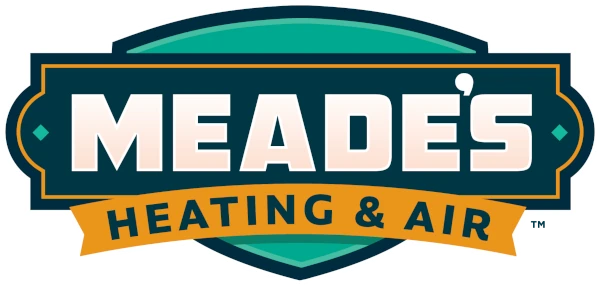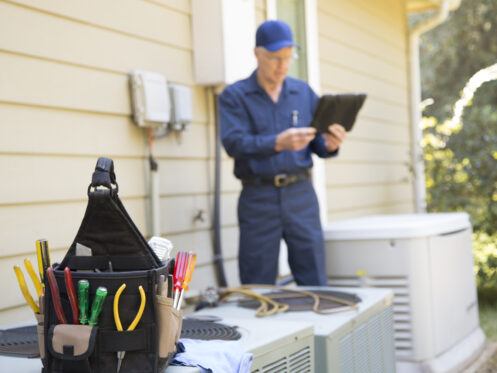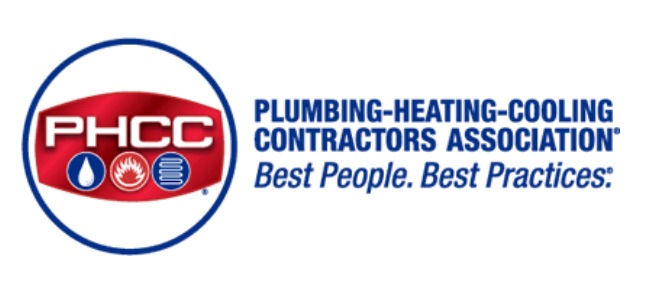A mini-split heat pump is an HVAC system that does not require ductwork and offers inherent flexible zoning. Mini-splits are also among the most energy-efficient HVAC solutions available in Sterling, VA. That said, there can be notable disadvantages, depending on your home and climate. With that in mind, let’s explore potential downsides and why you may want to consider a traditional furnace and air conditioner pairing instead.
Cold Weather Performance
A mini-split heat pump is an air-source heat pump. That means that it provides heating and cooling by transferring heat energy between the inside and outside air. The limitation is that there is a lot less heat energy in the air during the winter. Homeowners in Virginia who opt for a standard heat pump will often pair it with a furnace in a hybrid configuration.
HSPF stands for heating seasonal performance factor. It measures how efficiently a heat pump provides heat. You can also use it to compare heat pumps. The minimum in Virginia is 8.8 HSPF or 7.5 HSPF2. But at this level, a heat pump can cost a lot to run when the weather is particularly cold. You’ll likely want an HSPF of at least 10, or perhaps higher. Units with ratings that high will cost more.
Installation Costs
It’s often said that mini-split installation is cheaper than the installation of a central system. That’s true sometimes, but context is important here. This assertion often factors in the cost of ductwork design and installation. Many homes won’t need new ducts installed.
It also assumes that you only need basic equipment. That includes the outside unit and either one or two indoor units. That may be enough for a small house or a home addition. But if you’re considering a mini-split as an alternative to an AC and furnace, your costs will likely rise considerably.
You need to factor in the cost of each additional head, which can be around $1,000 each. It’s also important to consider the upper head limit. Most outdoor units can support up to eight primary heads. If you need an additional outdoor unit, that can double the primary installation costs.
Large Spaces
Mini splits aren’t ideal for large spaces. If you have a large living room, for instance, that can present a challenge. A potential solution is to have a secondary or multiple secondary units connected to a primary. This will increase both your equipment and installation costs.
Physical Footprint
Outdoor space requirements will generally be higher than a traditional split system than with a mini split. But the indoor space requirements, which is what most homeowners care about, are higher with the mini split.
While modern indoor air handlers are reasonably compact, they still take up notable wall space. You can opt for floor installation, but that may be an even greater inconvenience. Ceiling installation is optional as well. That approach may take up less usable space. But it can also drive up the cost considerably. This is particularly true if you need a carpenter to add reinforcements to the ceiling.
Interior Design
Room decor is a consideration as well. Most mini-split manufacturers design their indoor units to be as discreet and compact as possible. Despite that, some homeowners find them unattractive and distracting. A central system is simply going to be cleaner when it comes to room design.
There are options to work around your indoor units. One strategy is to paint the walls a similar color so that the units blend in. Some homeowners build shelving or cabinets around them. There are also a wide range of solid and flexible decorative screens and covers that can help camouflage them.
Blown Air
With a central system, you generally won’t feel the air unless you put your hand next to the vent. This is because the blower isn’t near the vents. It forces the air into the ductwork, where it balances out. The air coming from a central system is essentially leaking out into the living space.
This isn’t the case with a mini split. Each indoor unit has its own air handler. It blows air directly into the room in a forceful manner. This is one reason technicians will often install them high on walls. If you need different positioning, you’ll have to take the usage of the room into account.
One option to avoid this issue is directional airflow. Many units have a feature that lets you manually adjust the direction. Some units also have sensors that allow for automatic adjustment. You can also use this feature to keep the air on you.
Noise
Some mini-split manufacturers market how quiet their systems are in decibels relative to central systems. If you’re standing right next to them, the mini split will certainly be quieter. Some units are quieter than others. It’s worth paying more for the lower noise level, particularly in bedrooms and home theater rooms.
Maintenance
Mini-split heat pumps generally require more maintenance than a central system. With a central system, the homeowner needs to swap out the HVAC filter about every one to three months. With a mini split, there is a filter in each unit. The homeowner needs to clean them and the unit cabinet every four to six weeks. You also need to purchase a new filter for each indoor unit each year.
The industry recommends a seasonal tune-up in spring and a seasonal tune-up in fall for all HVAC systems. Tune-up costs will generally be higher for a mini-split. This is because the technician must inspect, clean, and calibrate every indoor unit in the home. Depending on the size of your system, the tune-up fee can be four times as high.
Centralized Access
An advantage of a mini-split heat pump is that you can control each indoor unit independently. This can also be a disadvantage, depending on your perspective. Most systems come with remotes. In addition, most mini-split remotes can pair with all indoor units at the same time. The issue is that you must be in proximity to the unit. That’s inconvenient if you want to adjust the bedroom temperature while in the living room.
That’s why many installers advise homeowners to budget for a system with smart features. These systems let you control your system from your phone via Wi-Fi or even over the internet. You can adjust the temperature and other settings from every unit anywhere in your home without getting up.
Your Local HVAC Pros in Northern Virginia
If you live in Sterling or the surrounding areas, Meade’s Heating and Air would be proud to be your HVAC provider. Our technicians install, maintain and repair ductless air conditioners and heat pumps. We also provide those services for central air conditioners and forced air furnaces. Our team includes indoor air quality experts that install air purifiers, UV lamps, dehumidifiers and humidifiers. We also have plumbers that install water and gas lines, tankless and tank water heaters and boilers. Call us today or contact us online to schedule a service appointment or in-house consultation.




